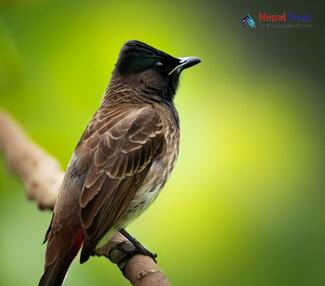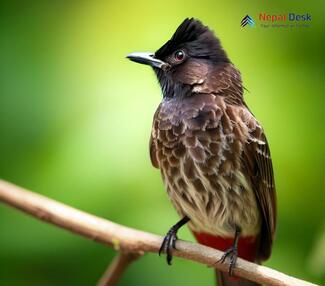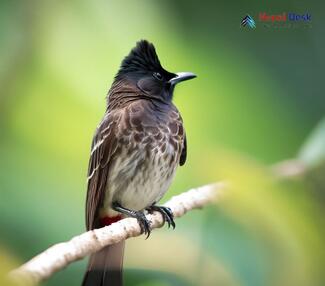The Red-vented Bulbul (Pycnonotus cafer) is a fascinating species of bird found in various parts of Asia, including the beautiful nation of Nepal. Known for its striking features and adaptable nature, this bird has captured the interest of both ornithologists and casual bird-watchers alike. In this article, we will delve into the taxonomy, physical features, habitat, diet, presence in Nepal, and an interesting point about this unique avian creature.
Taxonomy and Physical Features
Belonging to the family Pycnonotidae and the genus Pycnonotus, the Red-vented Bulbul is classified scientifically as Pycnonotus cafer. As its name suggests, this bird boasts a prominent red patch on the lower abdomen just above the tail feathers – the vent – which stands out against its predominantly black or dark brown plumage. The Red-vented Bulbul also exhibits a characteristic crest on its head with white-tipped feathers.
Habitat and Distribution
The adaptable nature of the Red-vented Bulbul allows it to thrive in various habitats ranging from forests to urban gardens. Although primarily found in subtropical regions, these birds can also be spotted at varying altitudes in cities and villages alike. Their distribution spans South Asia, with populations found in countries such as India, Sri Lanka, Bangladesh, Pakistan, Myanmar – and of course – Nepal.
Dietary Habits
Primarily omnivorous in nature, the Red-vented Bulbul's diet mainly consists of fruits and insects. They play an essential role in controlling pest populations since they target caterpillars and other insects that can be harmful to vegetation. However, these birds can be a double-edged sword for farmers: while they help control pests, they can also be detrimental to fruit crops as they enjoy feasting on ripe fruits.
Presence in Nepal
The Red-vented Bulbul is widely distributed across Nepal and can be found in various habitats, including subtropical forests, shrublands, and even populated areas. One reason for its widespread presence may be due to the availability of suitable nesting sites – the birds often build their nests in the forks of trees or bushes, which are abundant in Nepal's diverse landscapes.
An Interesting Point:
An intriguing aspect of the Red-vented Bulbul is its adaptability to different habitats, making it a successful species in terms of survival. However, their adaptability and expansion into new territories have also led to them being considered an invasive species in some regions, such as Hawaii and Fiji. Efforts have been made to control their populations in these areas to prevent disruption to local ecosystems.
In conclusion, the Red-vented Bulbul offers a fascinating insight into avian life in the diverse landscapes of Asia and specifically Nepal. Their striking physical features, versatile habitat preferences, varied diet, ample presence, and intriguing adaptability make this bird a remarkable study for anyone interested in ornithology or simply appreciating nature's beauty.




